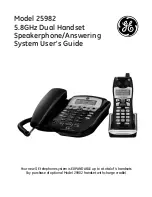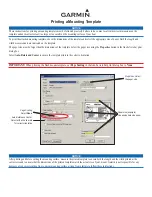
33
5. SELECTING THE TEST MODE
There are 26 types of test modes as shown below. The groups can be switched by pressing the
. m
“R”
or
M >
“R”
button. After
selecting the group to be used, press the
ENTER/YES “R”
button. After setting a certain group, pressing the
. m
“R”
or
M >
“R”
button
switches modes shown below.
Refer to “Group” in the table for details can be selected.
All items used for servicing can be treated using group [Service]. So be carefully not to enter other groups by mistake.
Note:
Do not use the test mode in the [Develop] group.
If used, the unit may not operate normally.
If the [Develop] group is set accidentally, press the
MENU/NO “R”
button immediately to exit the [Develop] group.
• For details of each adjustment mode, refer to “5. Electrical Adjustments”.
For details of “Err Display”, refer to “Self-Diagnosis Function” on page 2.
• If a different mode has been selected by mistake, press the
MENU/NO “R”
button to release that mode.
• Modes with (
×
) in the Mark column are not used for servicing and therefore are not described in detail. If these modes are set acciden-
tally, press the
MENU/NO “R”
button to release the mode immediately.
Display
AUTO CHECK
Err Display
TEMP ADJUST
LDPWR ADJUST
Iop Write
Iop NV Save
EF MO ADJUST
EF CD ADJUST
FBIAS ADJUST
AG Set (MO)
AG Set (CD)
TEMP CHECK
LDPWR CHECK
EF MO CHECK
EF CD CHECK
FBIAS CHECK
ScurveCHECK
VERIFYMODE
DETRK CHECK
0920 CHECK
Iop Read
Iop Compare
ADJ CLEAR
INFORMATION
CPLAY2MODE
CREC 2MODE
Details
Automatic self-diagnosis
Error history display, clear
Temperature compensation offset adjustment
Laser power adjustment
Iop data writing
Writes current Iop value in read nonvolatile memory using microprocessor
Traverse (MO) adjustment
Traverse (CD) adjustment
Focus bias adjustment
Auto gain output level adjustment (MO)
Auto gain output level adjustment (CD)
Temperature compensation offset check
Laser power check
Traverse (MO) check
Traverse (CD) check
Focus bias check
S-curve check
Nonvolatile memory check
Detrack check
Most circumference check
Iop data display
Comparison with initial Iop value written in nonvolatile memory
Initialization of nonvolatile memory for adjustment values
Display of microprocessor version, etc.
Continuous playback mode
Continuous recording mode
No.
C01
C02
C03
C04
C05
C06
C07
C08
C09
C10
C11
C12
C13
C14
C15
C16
C17
C18
C19
C25
C26
C27
C28
C31
C36
C37
Mark
Group
Check
Service
















































